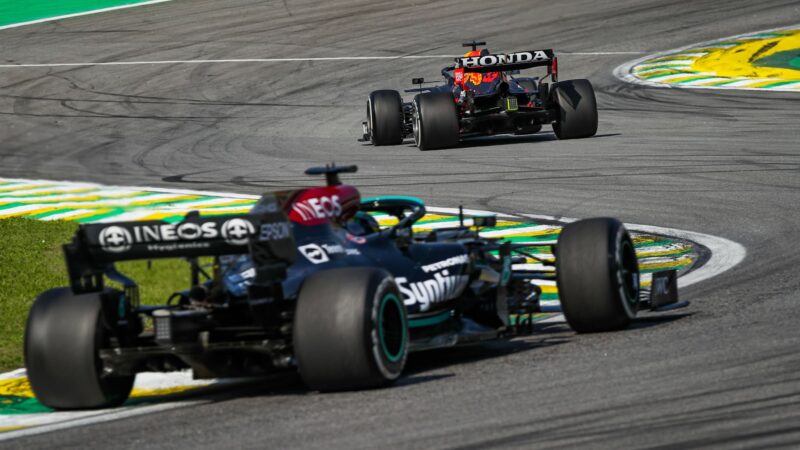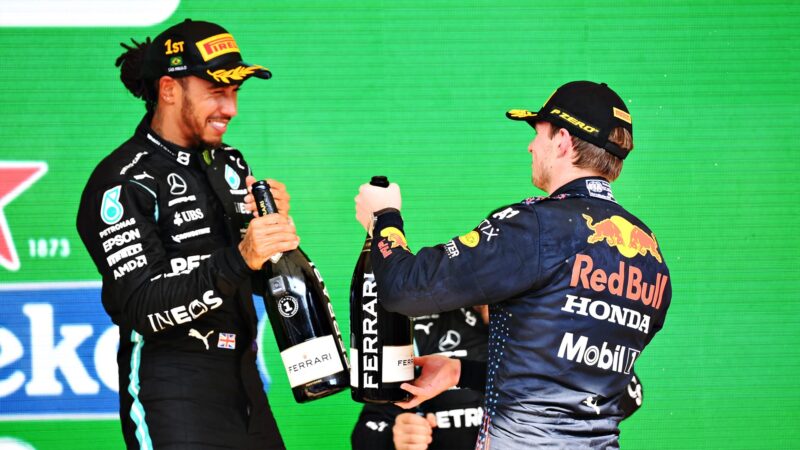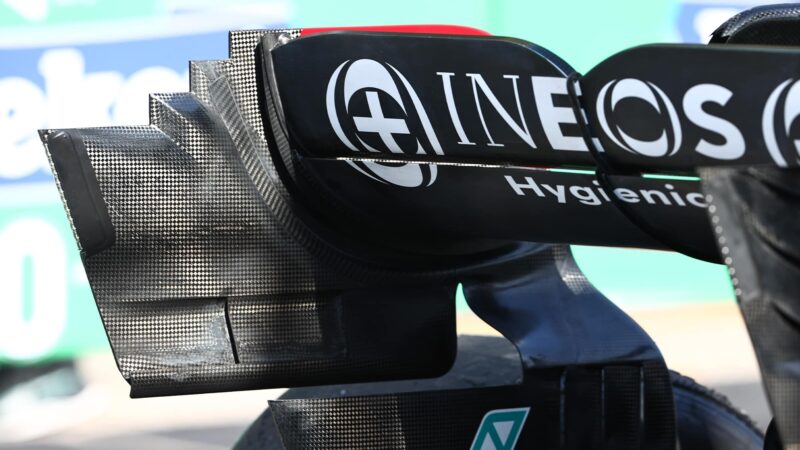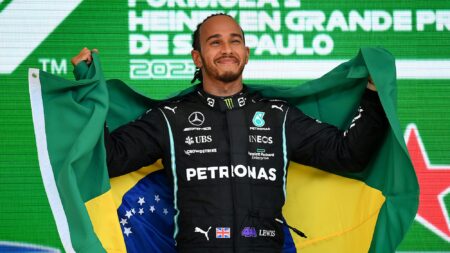The Red Bull was blighted by understeer from the cool of Friday to the scorching 55-deg track temperature of Sunday. With a weaker front but stronger rear than the Mercedes, it was harder on its front tyres. Which on race day meant higher degradation, even for a two-stopping strategy.
As in Austin, the cars had to be driven to their tyre temperatures. The Mercedes was a much better-balanced and happier car around Interlagos than the Red Bull. Verstappen, once he’d bundled Bottas aside in the opening seconds, set the pace at the front. Hamilton was behind him by lap 19 and there was no great difference in their pace in the first stint as they circulated on the medium compound tyres. But as soon as they switched to the hards the Red Bull’s understeer increased. In the middle stint Hamilton circulated behind and conserved, menacingly just out of turbulence reach.
Verstappen urged the team not to allow Hamilton to undercut them and he was brought in for his second stop on lap 40. That was too early for a car as hard on the tyres as the Red Bull on this weekend. As Verstappen set out at a gentle pace for the final 31-lap stint, Hamilton was soon upon him and beginning press home his advantage.

Just biding his time…
Florent Gooden / DPPI
Lewis just wore Max down as Max wore his tyres down. On lap 48 the Mercedes went for a move around Verstappen’s outside into Turn 4 and was marginally ahead – until Verstappen took to the run-off, forcing Hamilton out there too. The stewards took a look at it but dismissed it. Hamilton regrouped and relaunched his attack on lap 59, with Verstappen’s tyres now much worse. Despite Verstappen’s weaving, Hamilton had enough momentum to make the Turn 4 move without risk. The crowd loved it.
Verstappen accepted second from that point, always comfortably clear of Bottas, with Sergio Perez taking fourth and fastest lap after a late stop for a set of softs, thereby depriving Hamilton of a further point. He’s now 14 behind with three races to go.




